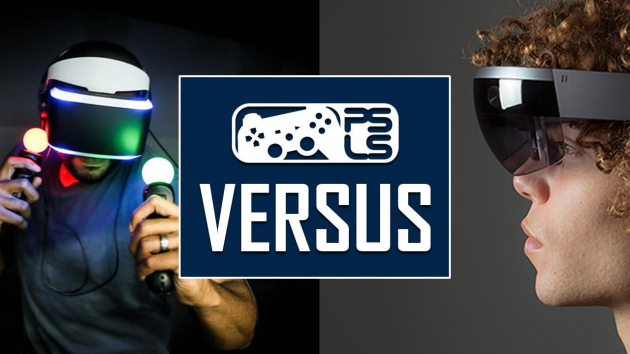Oculus Rift vs. HoloLens vs. Project Morpheus: Battle of the Reality-Altering Devices
By the end of 2015 we hope to see the release of at least one, if not all, of the "game-changing" devices that are expected to initiate a progressive transformation in not only videos games, but also in communication, work, entertainment, innovation, and virtually every other aspect of human life.
The bold prediction that “reality-altering” devices will “change everything” within the next couple years may sound like sheer marketing hyperbole to someone who hasn't taken the time to research the Oculus Rift, Microsoft's HoloLens, and Sony's Project Morpheus, but it is in fact true that these devices and their successors will most likely open the door to some incredible technological possibilities in the near and far future.
While it's easy to get lost daydreaming about concepts that were once only possible in science fiction films, in the short-term there could be a lot of consumers facing a very tough buying decision in the 2015 holiday season.
While none of the reality-altering devices in this comparison have been given an official release date yet, we expect the HoloLens to come out around the same time as Windows 10, which, according to Microsoft, is set to drop “later this fall,” and there's a rumor that the staff at Oculus would be "disappointed" if the Rift's release date drifted past 2015.
With those facts in mind, it is possible that Sony might wait to launch Project Morpheus to avoid the stiff competition, or they may try to get in on the holiday rush as well. In any case, Sony will likely try to keep the release date within the 2015-2016 season.
Release date and future speculation aside, let's take a closer look at what we actually know about each of the upcoming reality-altering devices and what makes them different from each other:
Features and Potential Applications
 First, we should note that the Oculus Rift and Sony Morpheus are both virtual reality (VR) headsets, whereas Microsoft HoloLens is more of a mixed reality (MR) device, which combines augmented reality (AR) and VR capabilities while placing a stronger emphasis on AR through holographic imagery.
First, we should note that the Oculus Rift and Sony Morpheus are both virtual reality (VR) headsets, whereas Microsoft HoloLens is more of a mixed reality (MR) device, which combines augmented reality (AR) and VR capabilities while placing a stronger emphasis on AR through holographic imagery.
This means that both the Oculus Rift and the Sony Morpheus will completely cover the wearer's field of vision and immerse them in a full VR experience, whereas HoloLens will merely augment the physical world with holographic imagery, which does not block out reality but instead enhances it.
VR devices like the Rift and Morpheus could prove to be more useful for simulations, training emulators, gaming, social networking and 3D video, whereas AR and MR devices like the HoloLens could transform real-world innovation and communication by bringing cyberspace elements into the physical realm.
As such, there have been a number of pundits pointing out the obvious fact that the HoloLens will be a very different device than its two primary competitors, focusing more on improving our interaction with reality than creating entirely new realities.
Thus, there is no real comparison between the HoloLens and the Rift or Morpheus from a functionality standpoint, although many consumers will undoubtedly find themselves struggling to decide which product they want to buy first.
So then the question is, what makes the Morpheus and the Rift different as full VR headsets, and which one will consumers prefer? Perhaps the biggest factor that separates Project Morpheus from the Rift is the direction of their development. Morpheus is being designed by the maker of the PlayStation series, so it is very possible that this device could be more appealing to gamers and have a more appealing title library in the long-term, being that it is expected to launch as an accessory to the PlayStation 4.
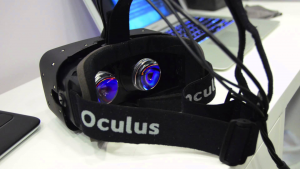 The Rift and its development company Oculus VR were acquired by Facebook for the hefty investment of $2 billion, and Mark Zuckerberg and the Rift's inventor have both called the platform the future of social networking. With that said, we expect the Rift to offer interesting communication and collaboration tools as well as gaming and entertainment, whereas Morpheus will probably be geared more towards the PS4 gaming crowd, which is a substantial market in its own right, considering the size of the existing PlayStation fanbase.
The Rift and its development company Oculus VR were acquired by Facebook for the hefty investment of $2 billion, and Mark Zuckerberg and the Rift's inventor have both called the platform the future of social networking. With that said, we expect the Rift to offer interesting communication and collaboration tools as well as gaming and entertainment, whereas Morpheus will probably be geared more towards the PS4 gaming crowd, which is a substantial market in its own right, considering the size of the existing PlayStation fanbase.
The Rift will be a standalone headset that requires no additional controls, consoles or devices, although Oculus VR has assisted Samsung in making a Rift-like smartphone-based VR headset called the Gear VR, which requires a Galaxy Note 4. Samsung opted to release the Gear VR ahead of the Rift and other competitors, so you can get one now in the AT&T online store, Samsung's online store, and most recently, even Best Buy's online store.
Comfort and Aesthetic Appeal
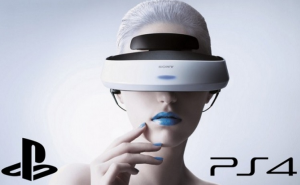 If consumers are expected to wear these devices for extended periods, Sony, Microsoft, and Oculus VR are going to need to ensure that they're both comfortable and reasonably appealing. While most of us haven't been privileged enough to wear one of these headsets, we can tell by pictures that, in comparison to the Rift, the Morpheus looks a bit more visually appealing with its blue lighting effects, and the way it adheres to the front of the wearer's face gives it a more comfortable look as well. Then there's the fact that Sony has hinted at the possibility of a wireless version of the Morpheus.
If consumers are expected to wear these devices for extended periods, Sony, Microsoft, and Oculus VR are going to need to ensure that they're both comfortable and reasonably appealing. While most of us haven't been privileged enough to wear one of these headsets, we can tell by pictures that, in comparison to the Rift, the Morpheus looks a bit more visually appealing with its blue lighting effects, and the way it adheres to the front of the wearer's face gives it a more comfortable look as well. Then there's the fact that Sony has hinted at the possibility of a wireless version of the Morpheus.
The HoloLens is once again in its own category here, looking more akin to Google Glass or a robust pair of sports glasses, which makes more sense for their intended AR purpose. With that said, it looks like Oculus VR and Sony are going to have a hard time competing with the HoloLens in the comfort and appearance department.
But that's okay, because VR devices are supposed to wrap around your head to cover your field of vision, and it's kind of hard to make that look and feel as good as a pair of augmented sunglasses; no matter what design you use, you still have a sizable display strapped to the front of your face.
While the Oculus Rift is described as lightweight and comfortable on its official site, in the PCAdvisor overview of the Rift it was implied that the current version is a bit too clunky, and it was said that the consumer release needs to be “more of a gadget and less of a bondage toy.”
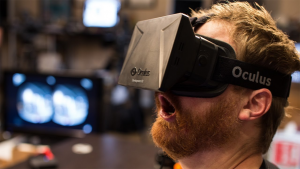 The main aesthetic challenge with the Rift, Morpheus, and other full VR devices, is making the headset conform tightly without sacrificing comfort and style. Any slack or leeway could allow the display to jolt or move out of place during playback, which of course would compromise the quality of the viewing experience. Players of first-person shooters and other action games will need to be able to rotate their head in all directions as fast as they would without a headset..
The main aesthetic challenge with the Rift, Morpheus, and other full VR devices, is making the headset conform tightly without sacrificing comfort and style. Any slack or leeway could allow the display to jolt or move out of place during playback, which of course would compromise the quality of the viewing experience. Players of first-person shooters and other action games will need to be able to rotate their head in all directions as fast as they would without a headset..
In order to keep the VR effect accurate, the headset has to be firmly positioned into place to provide a stable and static view of the head-mounted display. The user should be able to move their head around freely in all directions without the headset coming loose. The challenge is creating this type of firm fit without compromising user comfort.
Price and Compatibility
The best part about these devices is that they'll be launching at prices that will be affordable to most consumers. For example, the Oculus Rift is expected to go on sale at the surprisingly low launch price of around $200-$300. Sony has stated that consumers will not have to pay $1000 to get their hands on the Morpheus, even though that is how much Sony is charging for their head-mounted HDTV.
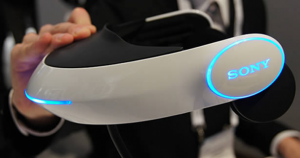 Representatives at Sony Computer Entertainment have explained that the Morpheus will be sold a much cheaper price because much of the profit will be made from accessories, games, and services that will accompany the Morpheus, PS4, and PlayStation Vita. This type pf pricing model is common in the gaming industry, where consoles are sold at or below manufacturing cost with the goal of earning a profit from peripherals, subscriptions, and gaming/entertainment content. With that said, VR enthusiasts that do not yet have a PlayStation 4 or PlayStation Vita may opt for the standalone Rift instead of the Morpheus, to avoid spending the extra money to buy both a gaming console and a VR headset.
Representatives at Sony Computer Entertainment have explained that the Morpheus will be sold a much cheaper price because much of the profit will be made from accessories, games, and services that will accompany the Morpheus, PS4, and PlayStation Vita. This type pf pricing model is common in the gaming industry, where consoles are sold at or below manufacturing cost with the goal of earning a profit from peripherals, subscriptions, and gaming/entertainment content. With that said, VR enthusiasts that do not yet have a PlayStation 4 or PlayStation Vita may opt for the standalone Rift instead of the Morpheus, to avoid spending the extra money to buy both a gaming console and a VR headset.
As far as platform compatibility is concerned, interestingly enough the HoloLens will run on the Windows 10, which is set to be the first version of Windows that will look and act the same across all devices, from smartphones to desktops. The Rift is not yet expected to be compatible with any existing game consoles, although that could change in the future. Of course, the HoloLens will also be compatible with the Xbox One, and there have been some interesting ideas proposed regarding how the HoloLens could be used to give players a floating off-screen HUD in holographic form. There's also a really cool version of Minecraft coming to the HoloLens.
Which One Will Become the Most Commonly Used?
We have a suspicion that the HoloLens and similar AR/MR products will get more wear time than their full VR counterparts, but that both types of products have the potential to sell just as well, and both VR and AR will find their place in society during the next decade.Still, this holiday season is shaping up to be a big one for Microsoft with the introduction of HoloLens and Windows 10, and as far as personal opinion goes, the general consensus seems to think that the HoloLens has the most impressive product trailers, but that's no surprise coming from Microsoft.
However, we'll wrap up our conclusion by stating that the Rift and the Morpheus should gain a massive following from gamers and entertainment buffs. Both Facebook and Sony have huge followings just like Microsoft does, so in the end it will be up to quality the of the finished products and how consumers respond to them at launch time.

